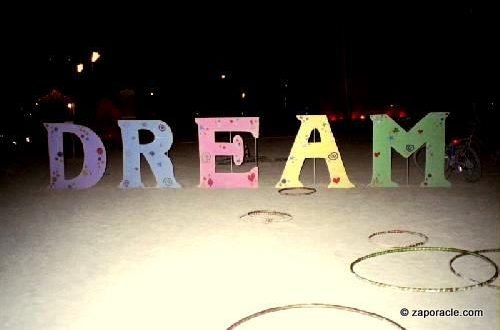This card concerns the value of the dream time. It can be highly empowering to become aware that you are dreaming in the dream time and also becoming aware in the waking time that you are in another type of dream, a collective dream.
A classic lucid dreaming technique is to ask yourself throughout the day: Am I dreaming? In some ways, the answer is always: Yes.
The heart has two phases: contraction and expansion, systole and diastole. Mammalian incarnation has two phases it cycles through daily — waking and dreaming.
We are interdimensional travelers, arriving from another dimension at birth and departing to other dimensions at death. The cycle of the day recapitulates the cycle of a life. At night/old age, we run out of energy, grow sleepy, and eventually surrender to the temporary oblivion of sleep/death. Sleep/death is not an eternity of velvet darkness; the velvet darkness is polka-dotted with shimmering portals — dreams/incarnations.
The dream time is our other daily dimension, and it is ruled by a different physics than the physics of our waking dimension. The relentless tyrant gravity does not bind us, and if we become lucid, we may be able to fly and translocate at will. Linear time does not bind us, and past, present, and future fold together in wavy patterns like Damascus steel. In the dream time, synchronicity is the rule rather than the seeming exception. The Tao of the dream usually unfolds in parallel to inner psychic content.
An unproven assumption is that we generate our own dreams. But the dreams of people who are dull and unimaginative in waking life often have the surreal double and triple entendre complexity of the dreams of the most imaginative. And who is the dream generator in the many documented cases of mutual dreaming?
“Even the dreams of ordinary people are as dazzling and multi-layered as a David Lynch film, and yet they’re invented on the fly. My theory is that they’re generated in spontaneous collaboration with the cosmos. Our psyches are like bubbles, floating in a field of infinite potential.”
Zap, Jonathan. Parallel Journeys (p. 476). Zap Oracle Press. Kindle Edition. Parallel Journeys, which contains many dreams and interdimensional experiences, can be read for free on this site. If you prefer Audible, Kindle or physical versions, those are all available on Amazon.
Our culture of fundamentalist materialism assumes that waking is “more real” than dreaming. Waking and dreaming are both perceptions that something seems to be going on. Physics tells us that the seemingly solid objects of our waking life are actually patterned energy, that matter (as Einstein pointed out) is actually just a special case of energy. Also, according to mainstream neuroscience, we never sense anything but internal perceptions. For example, when you look at an object with your waking eyes, your retina registers photons reflecting off the topography of the object’s surface. That light passes through the simple convex lens of your cornea and appears upside down on the back of your retina. The image is then turned right side up and otherwise interpreted by neurological processing. It takes a significant fraction of a second for the reflected light to register and be turned right side up by neurological processing. Therefore, your perception of the object is actually a neurological reconstruction of a past event.
Spiritual teachings, philosophy, neurology, and psychology unanimously tell us that we’re never sure of what we’re looking at and that human perception means looking through a glass darkly at a thin slice of the edge of a multidimensional multiverse. So, it is merely cultural prejudice to assume that the patterned energy we perceive in our waking life is “more real” than the patterned energy we perceive in dream time.
From the point of view of phenomenology, all we ever perceive is phenomena, not the “noumenon,” the actuality that underlies what we perceive.
From the point of view of analytical or monistic idealism (see Bernado Kastrup’s writings for the scientific update to this ancient philosophy), consciousness is the irreducible substrate of all reality. Idealism is gaining credibilty as it perfectly accords with the findings of quantum mechanics. I’m somewhere in the idealist camp, and so was Jung. See Decoding Jung’s Metaphysics by Bernado Kastrup. Note: I’m not convinced by Kastrup’s view of free will, but otherwise, his version of idealism seems on track.
Consider the case of a sleeping boy having a dream on a subway train. In the waking life, this boy has an abusive stepfather — a sadistic, controlling personality who sees this boy’s whole existence as an irritation. He pretends to have the boy’s best interests at heart, especially when others are present. The boy’s mother tells her son he should love his stepfather, but the boy is confused and unsure what to think of him. In the boy’s dream, his stepfather appears as a monster who turns into a human only when other adults are in the room. Meanwhile, back in the waking life, random strangers step on or off the subway, stations are announced, etc. Which is more “real,” what’s going on in the subway or what’s going on in the dream? If your point of view is meaningfulness or relevance to the boy, then the dream seems more “real.”
There’s a Jewish tradition that says, “An uninterpreted dream is like an unopened letter.” That overstates the case for dream interpretation. Dreams are not puzzles waiting to be solved — they are life experiences. Dream interpretation is at least as subjective and limiting as “life interpretation.” For example, it would probably be meaningless to attempt an interpretation of what you did last Tuesday. But on some Tuesday, there could be a dramatic, memorable episode of the sort that would later become a frequently repeated story or anecdote. These dramatic episodes could be subject to interpretations such as, “That certainly taught me never to believe that people are who they say they are.” Similarly, most of the dreams that people bring for dream interpretation are dramatic episodes where insistent meanings are trying to break through from dream time to waking time. Jungians call such dreams — “big dreams.”
The only reason dream interpretation works (when it does work) is that most people don’t recall all their dreams, just the big dreams. After sixty years of dream interpretation, Jung couldn’t make sense of most of his dreams. Same with me because I have high dream recall. During my six years of Jungian analysis in my twenties, when I had complexes left over from childhood to work out, I had many big dreams to bring to my weekly sessions. Once those complexes became conscious, I had fewer big dreams.
A common assumption about dreams is that we are alone in a world of our own imagining. Sleeping and dreaming are boundary-dissolving states, and our dreaming psyche may overlap with other dreaming psyches or autonomous entities able to travel into the dream time dimension. These impingements may be unwelcome intrusions or highly welcome visits from the living or dead.
The occurrence of this card is a reminder of the importance of the dream time as the other daily phase of your present incarnation. Don’t fall asleep to the Babylon Matrix spell of forgetfulness about the dream-time dimension. The Babylon Matrix wants you to believe that it is all there is and that your every will and desire must be fulfilled through the dense, gravity-bound parameters of its limited realm. Reclaim your birthright as an interdimensional traveler and restore your awareness of the dream time. Restore your awareness of the Babylon Matrix as a massively dense collective dream. At the end of the day and the end of your life, you may find that you were living in a dream from which you will awaken into other dreams.
See Jonathan Zap’s Dream Interpretation Service
See the dream category of the writing section of this site.
 ZapOracle.com home to the free 720-card Zap Oracle
ZapOracle.com home to the free 720-card Zap Oracle






